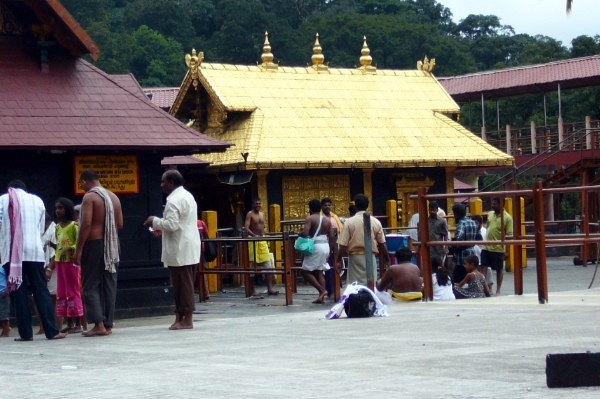Insta
Five Key Takeaways From Supreme Court’s Decision To Lift The Ban On Women’s Entry Into Sabarimala Temple

The Sabarimala temple in Kerala (Wikimedia Commons)
A five-judge bench of the Supreme Court on Friday struck down the ban on entry of women into the Sabarimala temple in Kerala. In a 4:1 ruling, the Apex Court allowed all women in the age group of 10 to 50, who had previously been barred from entering the temple, access and struck down Rule 3(b) of the Kerala Hindu Places of Public Worship (Authorisation of Entry) 1965 as ultra vires.
Chief Justice Dipak Misra writing on behalf of himself and Justice Khanwilkar, Justice Rohinton Nariman and Justice DY Chandrachud supported lifting of the ban on women’s worship at the hill shrine while Justice Indu Malhotra authored the lone dissent.
- The bar on entry of women between ages 10 and 50 is not an essential part of religion.
- The devotees of Lord Ayyappa could not be held to be a separate religious denomination and are exclusively Hindus. The impugned state rule violated the right of Hindu women to conduct worship at the Sabarimala temple and was therefore violative of Article 25 of the Constitution.
- Women could not be denied the right to worship on the grounds of physiological factors or religion. To do so was to stigmatise them and could not be condoned.
- Justice Chandrachud further interpreted Article 17 of the Constitution in a broad fashion and did not restrict the same to the abolition of untouchability.
- Justice Indu Malhotra in her dissent noted that religious practices could not be tested solely on the anvil of Article 14 of the Constitution and the issues raised in respect of Sabarimala impacted other religious places of worship as well.
Introducing ElectionsHQ + 50 Ground Reports Project
The 2024 elections might seem easy to guess, but there are some important questions that shouldn't be missed.
Do freebies still sway voters? Do people prioritise infrastructure when voting? How will Punjab vote?
The answers to these questions provide great insights into where we, as a country, are headed in the years to come.
Swarajya is starting a project with an aim to do 50 solid ground stories and a smart commentary service on WhatsApp, a one-of-a-kind. We'd love your support during this election season.
Click below to contribute.
Latest